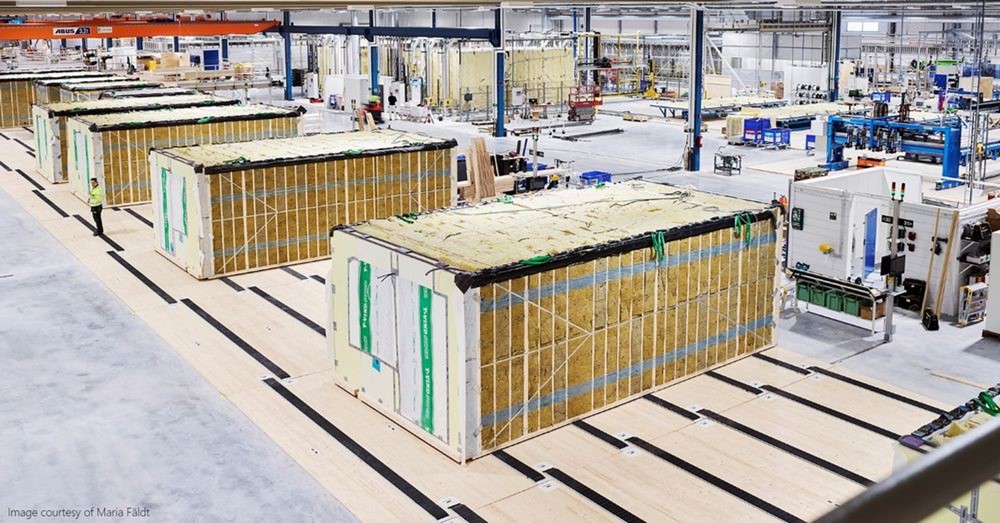There’s hardly a week goes by that someone isn’t emailing me about starting a new modular home factory. Most of them are relatively new to modular, however. Some of them have site-built experience but for the most part, the people emailing me are investors looking for ways to help new factories get started because, as one told me, “We need millions of houses in the US, so why not invest in something that can make that happen.”

Do you know how to end up with a million dollars in the modular home industry? Start off with 3 million! This isn’t true for everyone starting a modular factory but it is for many.
Starting up a modular home factory is a significant venture that requires extensive due diligence to minimize risks and enhance the likelihood of success.
Here are several critical areas you should consider:
Market Analysis: Understand the demand for modular homes in your target markets. Investigate the size of the market, growth potential, consumer behavior, and preferences. Identify key competitors and their offerings.
There are six distinct manufactured and modular housing markets in the US. They are the Northeast, Pacific Northwest, Mid-America, Southeast, Southwest and California. Rarely do they agree on anything modular!
Regulatory Compliance: Different regions have different regulations for the manufacturing, transportation, and installation of modular homes. Research the necessary permits, licenses, and certifications. Consider environmental laws, labor laws, and building codes.
Your new modular factory will probably deliver homes hundreds of miles from your new factory and you must know not only the codes and regulations for modular construction, you must know each state’s codes and in many cases, even the county, city, and local codes and regulations.
Technical Know-how: Make sure you understand the technological aspects of modular home production. This includes the design, manufacturing processes, materials, quality control, and the machinery required. Every failed modular factory’s owners could write a book about what they didn’t understand about production building.
Just because you have an automotive production background, it will only help you to understand the very basics of homebuilding on a production line.
Location: You’ll need a location with enough space for the factory and storage, preferably near transportation infrastructure for easy delivery. Research zoning laws, labor availability, and costs associated with the location.
One of the things a lot of startup factory owners forget is the huge amount of open space needed to store built modules before they are shipped to the job site. And let’s not forget that if your factory only has a limited amount of carriers and trucks to haul them, overnight trips can stall your production line. Oops!
Supply Chain Management: Examine the availability and cost of raw materials, potential suppliers, and the logistics of getting materials to your factory and finished products to customers.
A year or so ago, one modular factory couldn’t get windows in time to install on the modules on the production line and 40 modules for a project sat in the yard waiting for the windows to arrive and then get installed in the open storage area.
Costs and Financing: Calculate startup costs including land, construction, equipment, and operating expenses. Look into options for financing your startup.
Many entrepreneurs turn to investors for their financing and are surprised by how fast the money the investors gave them simply disappeared and when they went back for more, the investors suddenly became bean counters and took over the factory.
Business Model: Decide whether to sell directly to consumers or through distributors. Consider whether you will offer customization of homes and how that will impact manufacturing processes.
Remember, you can build modular homes for some people all the time but you can’t build modular homes for all people, all the time. Nobody is that good!
Staffing and Operations: Plan your workforce needs, including management, production staff, sales, and support.
Big Mistake #1: When hiring a GM and a Production Manager for your factory, there is an extraordinary huge difference between those needed to start the factory and those needed to keep a factory running after startup.
Risk Assessment: Evaluate potential challenges and risks such as market fluctuations, economic downturns, supply chain disruptions, and technological changes.
Big Mistake #2: Housing is a cyclical industry. Enjoy the hills but prepare your business for the worst when the industry sinks into the valley.
Sustainability: As environmental concerns become increasingly important, you may need to consider how to make your manufacturing processes sustainable, which can influence your choice of materials, waste management, energy efficiency, and more.
The more sustainable and energy savings you make your homes, the more costly they become and the more buyers will begin to look only at your bottom line price.
Once you’ve gathered all this information, you can use it to create a detailed business plan that outlines your strategy and plans for your modular home factory. This is an essential tool for attracting investors and for guiding your operations once you start your business.
“What detailed Business plan? I didn’t know I needed that too! And why do I also need a Marketing and a Sales plan. Are you friggin’ kidding me! Do I really need them, I thought people would simply flock to my door to buy my homes!”
Those remarks are more common than you think!



